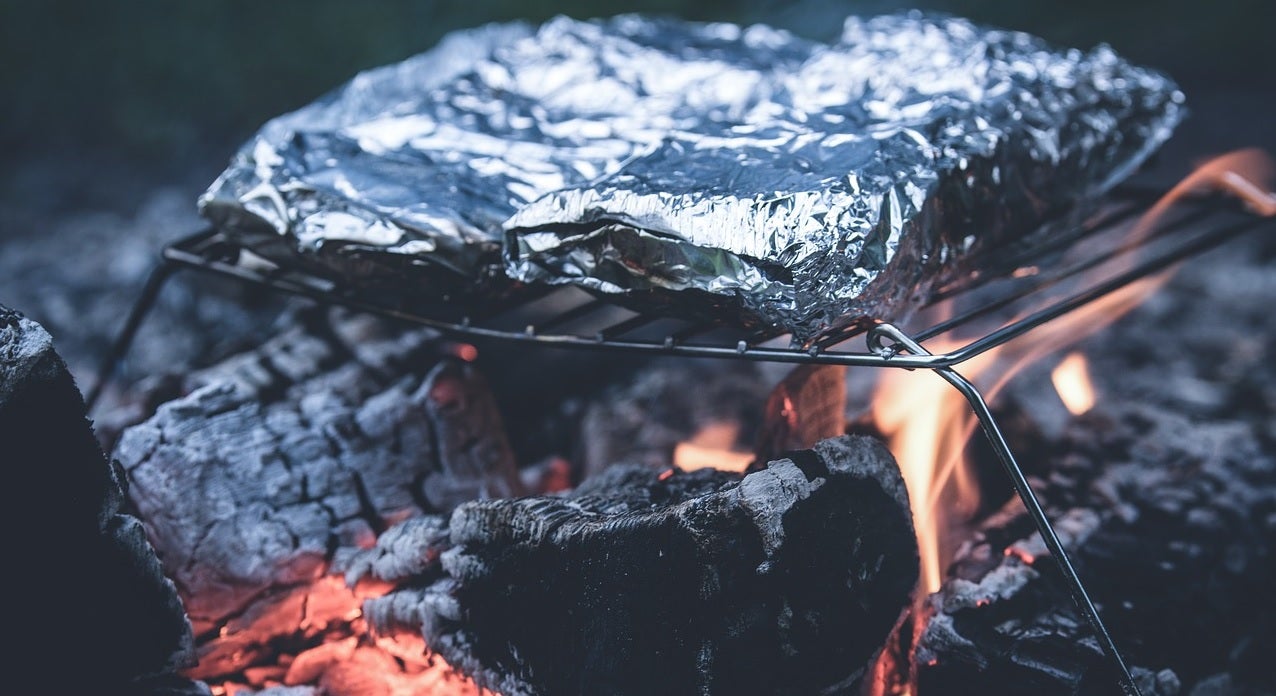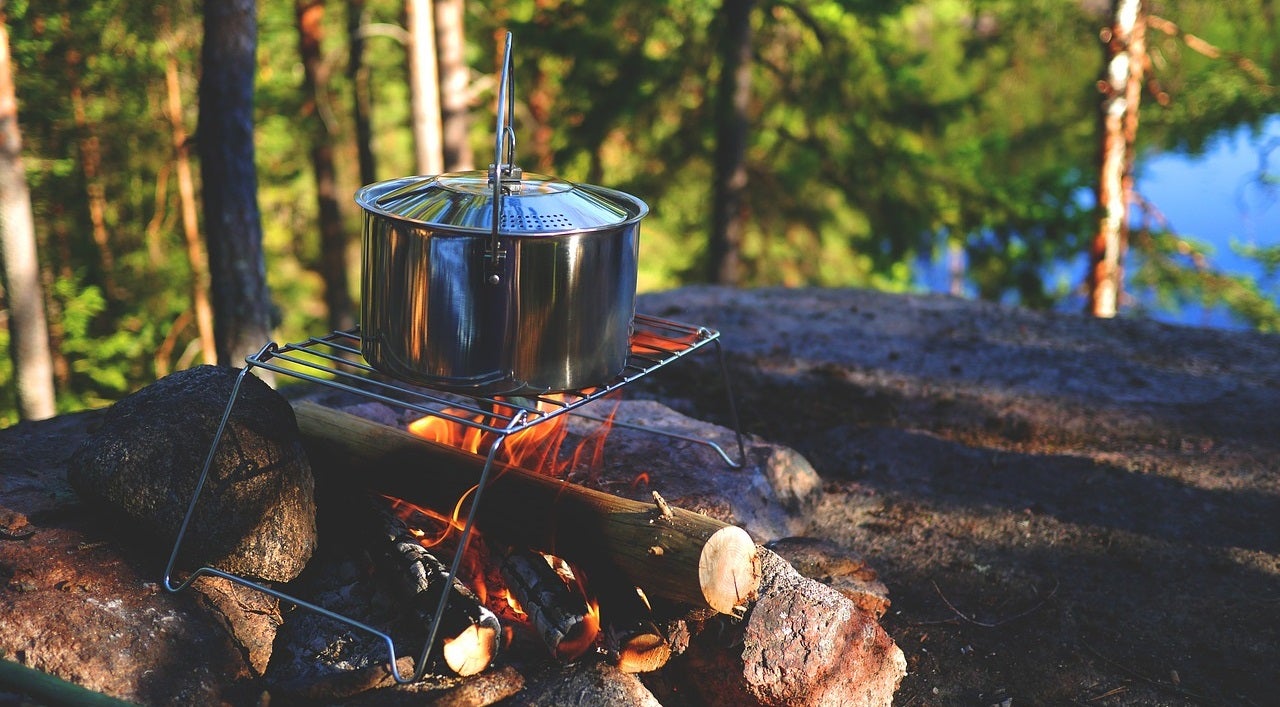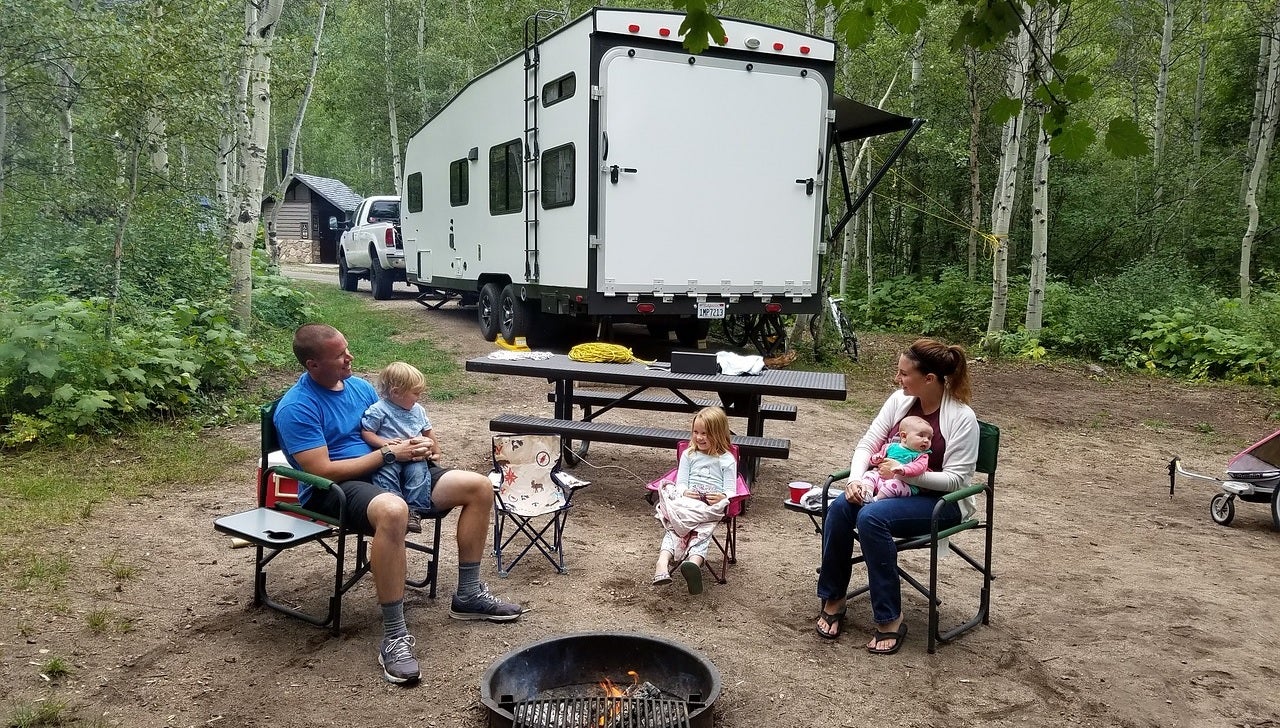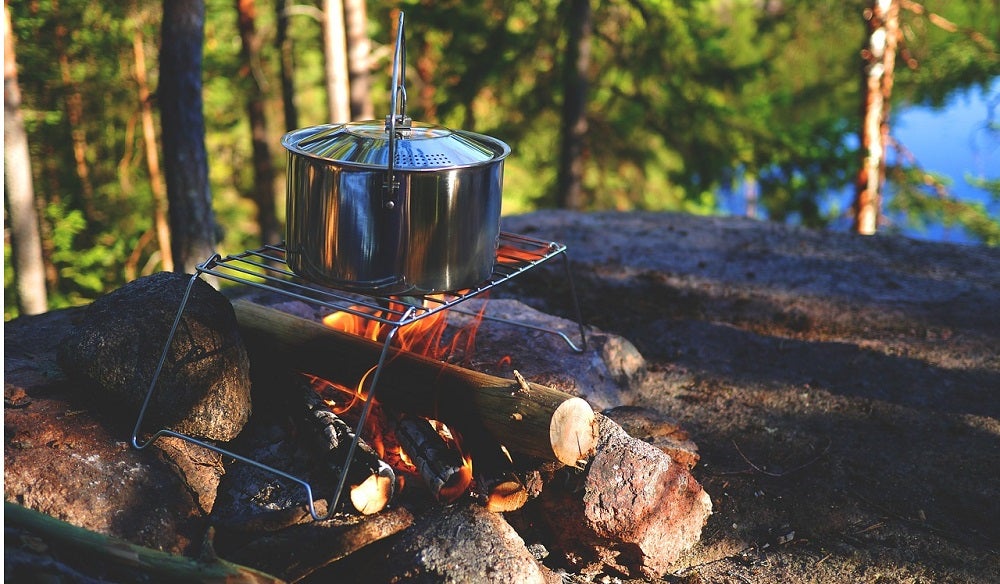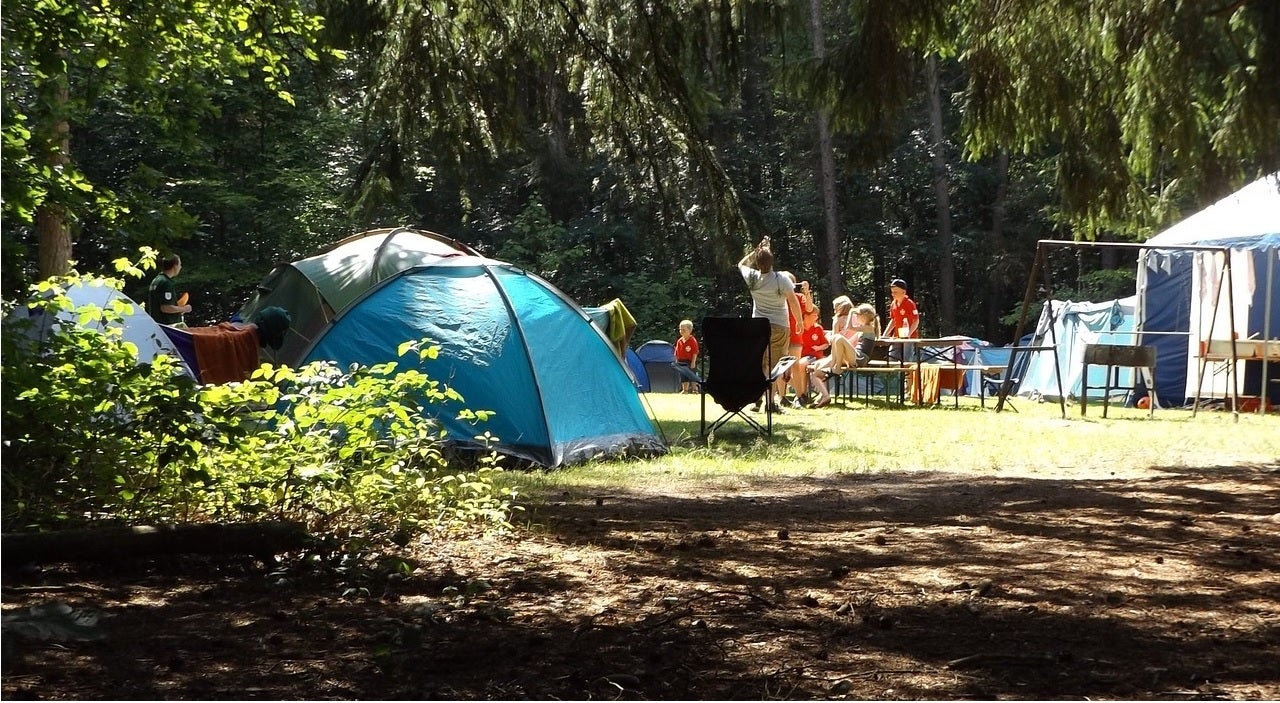
Our Editors independently research, test, and rate what we feel are the best products. We use affiliate links and may receive a small commission on purchases.
When getting ready for a camping trip, it is all too often to get excited about the open road, the fresh air, and the calming atmosphere of mother nature. It is usually not until you get to your camp that you realize you either forgot something or made things far more difficult than they need to be.
Because hygiene is so important and controlled spaces so rare, this is never truer than when cooking while camping. To help make sure your camping trip goes off without a hitch, we have put together a list of the best 8 cooking tips for camping.
#1 Aluminum Foil
There is likely no object, tool, or resource that is more valuable for cooking while camping than aluminum foil. Keep in mind, aluminum foil is incredibly versatile and useful in a fairly general way, but the sheer number of options it presents for campers simply cannot be ignored.
For instance, despite being resistant to extreme temperatures, a resistance to most natural liquids, while still having the ability to rapidly dissipate heat makes aluminum foil a great substance to use over fires. You can take these benefits a step further by adding the fact that aluminum foil is still thin enough to be infinitely shaped.
What this means is that is you have enough time, skill, and, more importantly, aluminum foil, you can conceivably remake virtually any food vessel that you would otherwise use at home. For instance, you can obviously use the foil as a makeshift plate, but you can also shape a curve into the foil and make a bowl or even a cup.
Aside from the dishware you use to hold your food, you can also fashion the aluminum foil into various pots or pans in which to cook the food–though it should be noted that the easiest way to do this is to simply fashion a device which can hold the food while cooking and eating without sacrificing ease or performance for either.
#2 Preparation
If you have ever worked in a restaurant, then you understand the value of ensuring that all of the different foods and ingredients are already ready to go.
This means putting meats in a marinade, pre-slicing, chopping, and dicing any fruits or vegetables and performing any number of preparatory tasks that will cut down on the prep time for making your meals. Of course, not all foods will react quite as well to this process, but thankfully, most of those foods have either a shell or skin which otherwise protects the food from harm by exposure.
Still, banana slices are likely not a foodstuff that you really need to prepare ahead of time considering how easy and relatively clean doing so on the spot is.
Another thing that preparing your food ahead of time will do is extend the length of time that some foodstuffs remain good. For instance, while it may not be the traditional or even legitimate way of curing meat, pre-salting your meats before you go camping will still extend the holding life of the meat.
Similarly, for fruits and vegetable, you can always add some type of a liquid to help extend its life as well. A good example of this would be any kind of gourd which is naturally fleshy and mostly water but will hold up exceptionally well when prepared and soaked in some kind of vinegar solution–not to mention this will give the vegetable a sour flavor similar to Italian dressing.
#3 Testing
Camping is an exciting event and, for those who genuinely enjoy everything about camping, preparing for the trip can be just as fun as going. However, even those who are regular campers can easily overlook a number of small tasks that will heavily impact your experience–especially in regards to cooking.
Ultimately, the biggest concern with this issue is whether or not everything you want to bring works as you intend it to. While this preparation often refers to more complex pieces of equipment, it can include anything from a simple tool to a more complex device to an incomprehensible piece of technology.
Basically, whatever you plan to bring, give it a test run beforehand to make sure that it will perform as well out in the field as you expect.
Again, while this commonly refers to more complex pieces of equipment, it can, and should, technically be applied to any and all tools that you might use. A good example of this can be shown with a camping stove and a can opener–arguably 2 of the most used cooking tools while camping.
While the stove can be fairly complicated–especially if you do not already understand how it functions–the simplicity of a can opener will do you no good if the can opener breaks at the hinge.
#4 Cooling
When it comes to keeping your food and ingredients cold, there are a couple of ways that you can go about it–many of which do not even require significant cooling measures to ensure that the food does not go bad. For instance, there are plenty of natural ways to take advantage of your surroundings to keep things cool.
If you are camping in a cold-weather climate, then the solution is fairly obvious: simply stick the foods which need to be kept cold in the snow. Of course, most places people camp do not offer this as a consistent option which forces other natural cooling methods.
While you may not be able to bury your food in absent snow, you can still always bury it anyway–if for no other reason than because it will inherently be cooler in the ground than above it in most circumstances.
Likewise, if you are camping next to a source of flowing freshwater, you can simply place the food item in a waterproof container, tie the container to the shore, and allow the foodstuff to either bob atop the water or tie a weight to keep it underneath the surface.
Just remember that leaving food out does present the risk of attracting wild animals if you are not careful.
#5 Frozen Food
This one may seem a bit odd considering the setting, but making sure as much of your perishable food is frozen as possible is a good idea. That said, not all foods will be able to handle the transition to a frozen state as well as others which can ultimately ruin the experience of the food–depending on its desired qualities.
For instance, meats can be frozen for long periods of time without affecting the general integrity of the food. On the other hand, most fruits do not fare well when frozen such that once the fruit thaws it will lose an integral quality of the experience–generally related to the tactile experience.
Foods that are composed primarily of water fare worse than those which are more or less dehydrated due to the expansion of the water causing microdamage.
Regardless of those nuances, for foods that can be frozen, starting with food frozen and keeping it in an iced container can greatly expand your options. Of course, this depends a great deal on the setting and length of your camping trip.
For instance, if you are camping in a cold weather location, you will likely get a great deal more life from this method than if you are camping anywhere near or along the equator.
Moreover, this process can be used to keep frozen foods in a hygienic state for days to weeks–though this now depends on the food more than anything else.
#6 Packing
The way that you pack will greatly impact everything relating to your camping trip, but because food happens to often be heavy and bulky, this can get even trickier for this task.
Specifically, when you have clothing, shelter, tools, and a host of other gear and equipment for your camping trip, it can be a bit difficult to devote 4+ sq. ft. and 50+ pounds to your camping meals.
Of course, there are plenty of ways to help cut down on these issues depending on how you pack not only the food but the various cutlery, dishware, and cookware that you bring with you.
For instance, it is a fairly common choice to opt for paper plates and plastic cutlery to ensure that you do not have to worry about washing dishes when you are done eating. However, there are plenty of complete camping sets which occupy little more than a square foot and one pound.
This can allow you to actually save space and weight and since you only need four settings altogether. Similarly, you can repackage food and condiments so that they are more easily retrieved. Anything that is liquid enough to be described as vicious should be packed in a squeeze bottle for easy dispensing and even easier cleanup.
#7 Covering Your Food
This can actually take a couple of directions depending on which part of the cooking process or equipment you refer to. For instance, while you are cooking, it is a good idea to keep the food covered as the open outdoors could easily end up carrying plenty of dirt, plant material, and other contaminants into your food.
This is especially troublesome if the contaminants are particulate or if the food is incredibly fluid. Regardless of the contaminate and food starting conditions, no one wants to have to pick pine needles out of their chili. Of course, there are a couple of ways that covering your cookware can come in handy.
If you opt for cookware as opposed to ad hoc foil cookware, then you should probably opt for some type of cast iron cookware. Despite how heavy it is, cast iron will cook better over an open fire, heating evenly throughout. On top of that, you can season the cast iron cookware while you are cooking with the addition of vegetable oil.
Not only that, but cast iron can more easily cook different foods in sequence without risk of failure than many of the other types of cookware materials. Finally, you can even prepare the cookware for cleaning by putting a thin layer of soap on the outside of the cookware, making cleanup that much easier.
#8 Planning
Technically, this is less of a concern due to the fact that you can account for most potential issues and plan pretty much any meal accordingly.
That said, there is still no getting around the fact that the meals you choose will have a big impact on all the other steps you need to take and any other extenuating circumstance you might need to consider. As such, you can reduce a great deal of prep time, particular transport or cooking rules, and clean up by simply choosing to cook food that will inherently make all of those tasks easier.
There is a big difference between cooking grilled vegetables cooking stew: sure, the stew is already made, but it also requires far more cleanup than grilled vegetables do.
A good example of this is corn on the cob which can be cooked while camping by simply placing the cob on a sheet of aluminum foil and placing the whole thing over the campfire.
Of course, there are plenty of minor tweaks to this formula which can improve the corn–like poking holes in the aluminum foil to give the corn a char flavor without burning the kernels.
Regardless, cooking while camping can be accomplished for most foods, but it will definitely be easier and less expensive for some foods than it will be for others.
Conclusion
As we can see, there are many ways to tackle the problem of cooking while camping, and you can feel free to mix and match as best suits your needs. Just remember to be attentive to your surroundings and the resources and dynamics they naturally present.
While you can make things much easier ahead of time with various preparations, there is no substitute for being able to use the nature around you to accomplish some of these tasks–keeping in mind the inconveniences these same settings impose on cooking as well.
In the end, with a little work ahead of time and a keen eye and a sharp mind in the moment, cooking while camping can be a relaxing and carefree experience.

